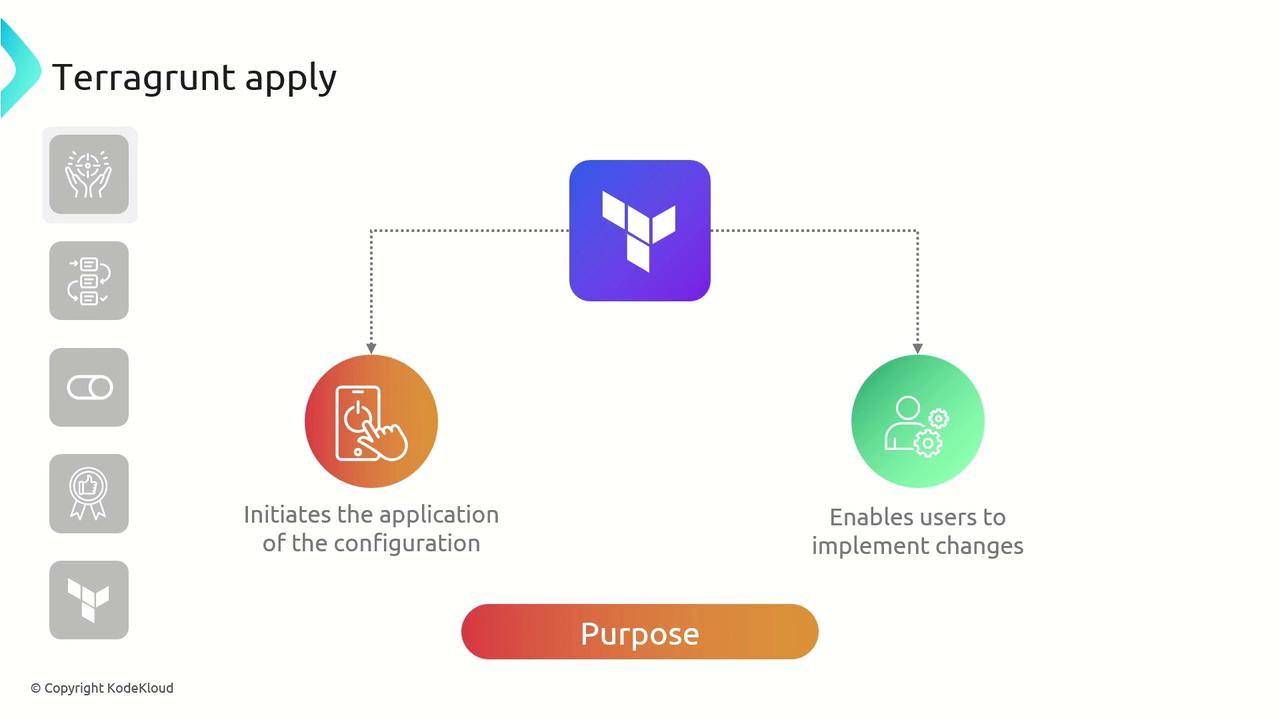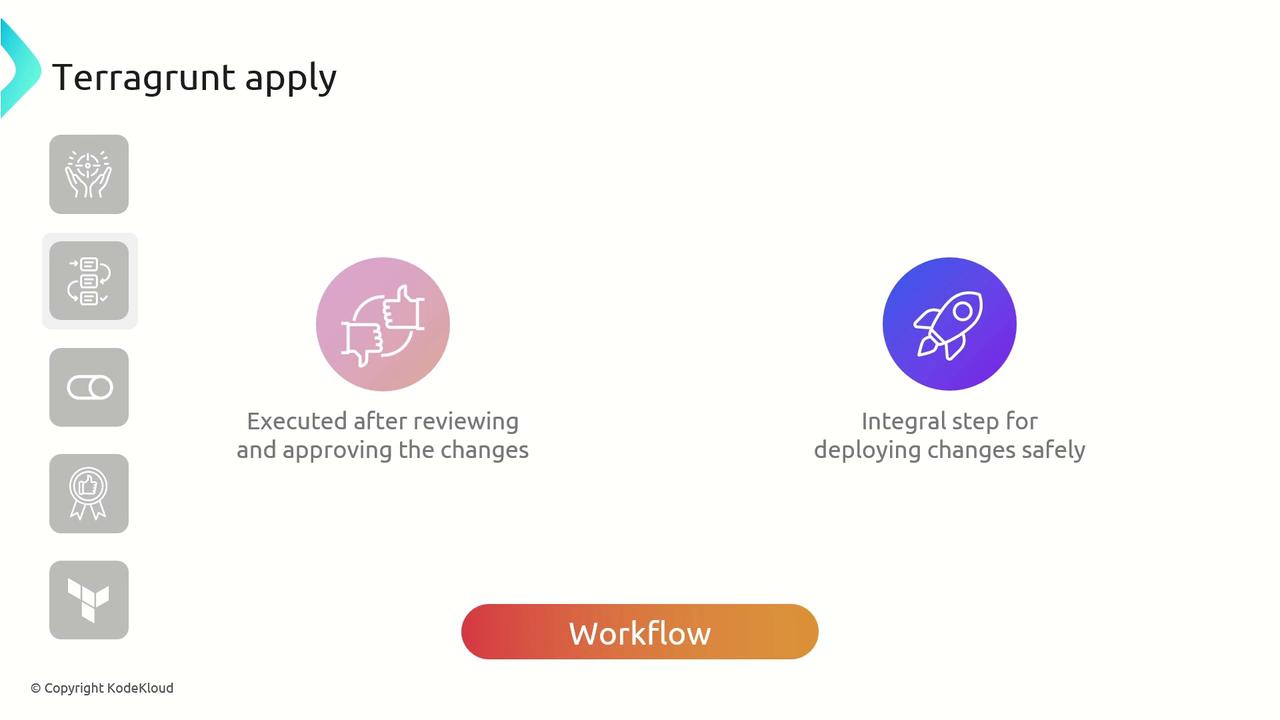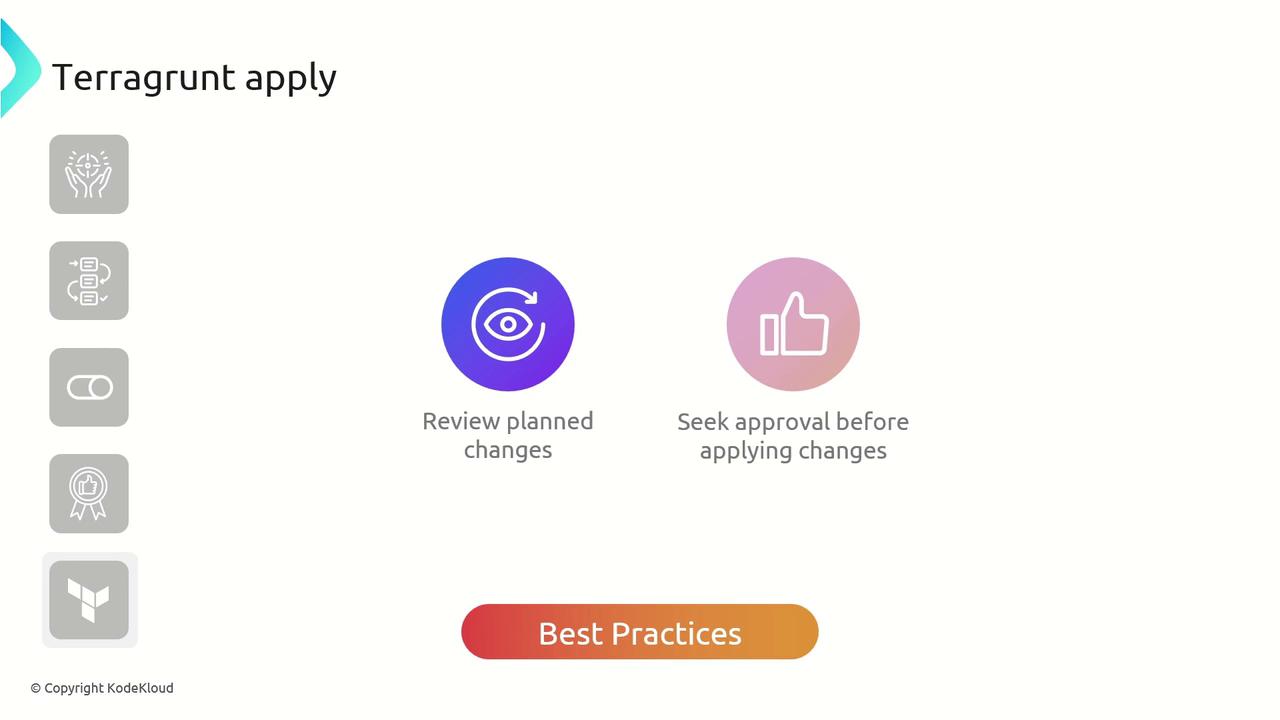Terragrunt for Beginners
Terragrunt Commands
terragrunt apply
In this lesson, we’ll dive into the terragrunt apply command—your gateway to automating infrastructure changes with Terragrunt and Terraform. After reviewing changes with terragrunt plan, terragrunt apply executes the approved plan, provisioning or updating resources across one or multiple modules.

Why Run terragrunt apply?
Always execute terragrunt apply after confirming the plan from terragrunt plan. This two-step approach ensures you understand potential changes before they impact your infrastructure.

Note
Under the hood, Terragrunt invokes Terraform’s terraform apply command and manages shared configuration across modules for you.

Note
By default, Terragrunt will execute modules in parallel, vastly reducing deployment time in large, modular repositories.

Best Practices
- Review the Plan: Always inspect the execution plan to catch unintended changes.
- Get Stakeholder Approval: Ensure team members sign off on modifications.
- Use Version Constraints: Pin module and provider versions for reproducibility.
Quick Reference: Common terragrunt apply Flags
| Flag | Description | Example |
|---|---|---|
| --auto-approve | Skip interactive confirmation | terragrunt apply --auto-approve |
| --target | Restrict apply to a specific module or resource | terragrunt apply --target=module.vpc |
| --terragrunt-include-external-dependencies | Include external dependencies in apply run | terragrunt apply --terragrunt-include-external-dependencies |
Applying Your VPC Module
We’ve already approved the execution plan for our VPC module. Below is the Terragrunt configuration and the commands to apply it:
terraform {
source = "tfr://terraform-aws-modules/vpc/aws//?version=5.8.1"
}
inputs = {
name = "KodeKloud-VPC"
}
Run:
$ terragrunt apply
Terragrunt will re-display the plan. After confirming the details, type yes:
Do you want to perform these actions?
Terraform will perform the actions described above.
Only 'yes' will be accepted to approve.
Enter a value: yes
Upon completion, you’ll see:
Apply complete! Resources: 1 added, 0 changed, 0 destroyed.
Terragrunt then prints the resulting outputs:
private_nat_gateway_route_ids = []
private_route_table_association_ids = []
private_route_table_ids = []
private_subnet_arns = []
private_subnets = []
public_route_table_ids = []
public_subnets = []
vpc_arn = "arn:aws:ec2:us-east-1:654654587809:vpc/vpc-03218326bbd74f4c"
vpc_cidr_block = "10.0.0.0/16"
vpc_enable_dns_hostnames = true
vpc_id = "vpc-03218326bbd74f4c"
vpc_owner_id = "654654587809"
Links and References
Watch Video
Watch video content